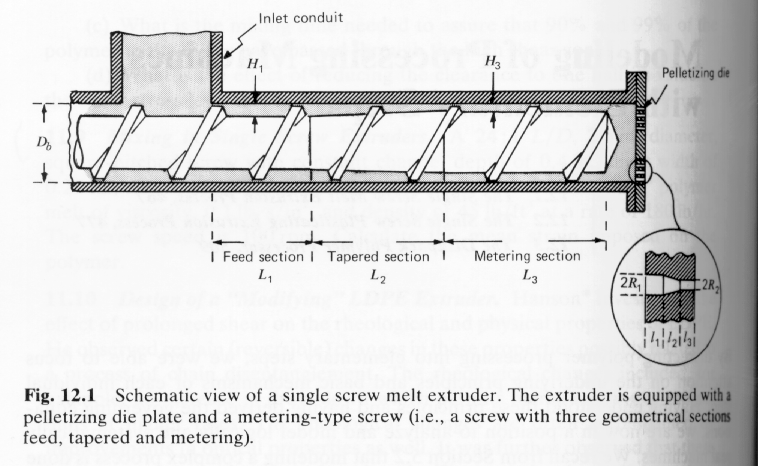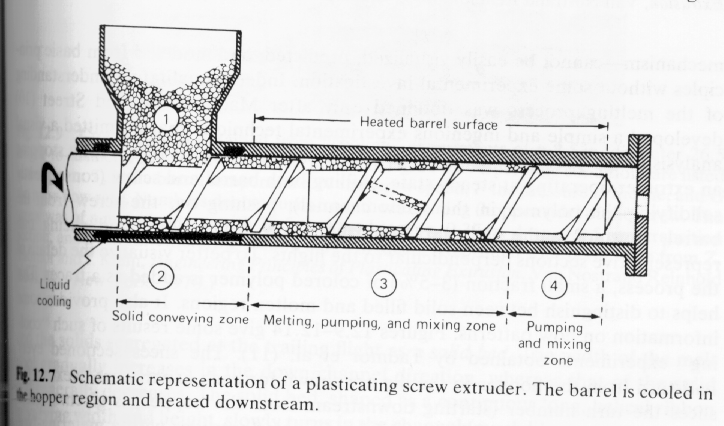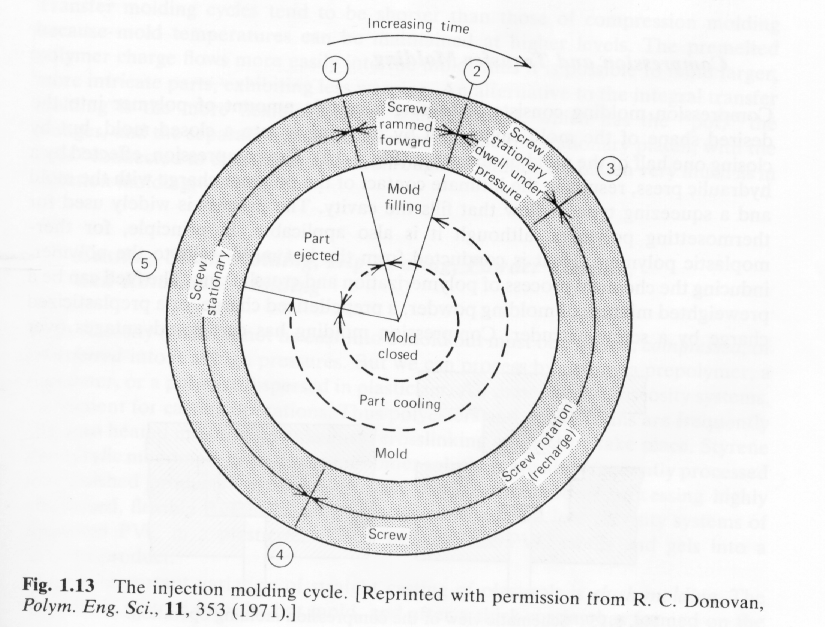1)




Homework 1
1) For the screw extruders shown on page 5 figure 1.3 explain what the various arrangements of screw threads might be achieving in a processing application.
Why is a rubber extruder shorter than a thermoplastic extruder? (Refer to figures 12.1 pp. 468, 12.7 pp. 477 and 17.1 pp. 685)
2) Most injection molding processes involve a two-step injection into the mold. Besides empirical approaches explain what guidelines you might use to design a protocol for this two step process (pp. 11, section 14.1 pp. 584). Explain the terms: hold time, gate, shot, soak, parting line, flash, fan, runner, front region, and weld line for an injection molding machine.
3) The entanglement molecular weight (fig. 2.3) defines the limit of useful properties in a polymer, e.g. PS below 10k is brittle. Explain how this is determined and why it varies for different polymers. Why do properties differ above and below the entanglement molecular weight?
4) Materials with De=° De=0 and De=15 have different properties. Explain these. How is "time-temperature" superposition related to the De approach? Why are "time-temperature superposition" and the Deborah number important to processing? (pp. 40, 163)
Answers Homework 1
1)



